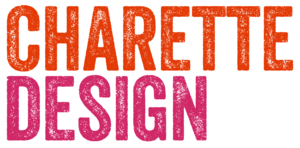Index
What's the concept behind the new 20th Century Fox/Chronicle Books "The Art of Robots" book you designed?
Pete Friedrich: The concept of the book was to showcase three aspects of the prodigious talents at Blue Sky Studios and of Bill Joyce. We wanted to show how they built an entire world from imagination. Second, we wanted to show how Blue Sky interpreted the work of Bill Joyce, a great illustrator and creator of the film. And third, we wanted to show the visual and thought process of developing a character, object or environment. We looked at several approaches inspired by the the steam era, combustion era and modern eras that are in the film's development. I've always adored the design of Fritz Lang's Metropolis — the cities, the "color" of the film, the typography, the threatening mood. I wanted to honor that integration.
Is the book a representation of the movie, a sketchbook, or a storyboard — or all three?
PF: Sadly, we didn't have room to show original storyboards. But I look at the book almost as a series of screen grabs of the final film that have been frozen and deconstructed. So the reader gets to see every amazing part of the film and how each was built and/or drawn.
What was your job in designing the book?
PF: Well, as book designers, we worked with Pamela Geismar, the Art Director at Chronicle Books, and with Steve Martino, Blue Sky's Art Director and Bill Joyce, the Executive Producer and Production Designer at Blue Sky.
Spread showing the character development.
Between the four of us we went through Blue Sky's vast visual archives and created a first round edit. From this, Pamela began to create chapters and a sequence. She and I loaded the chapters with images and worked out the beginnings of what should be emphasized and a visual hierarchy to each spread. After Charette received approval, we created design concepts for the pages. We designed the entire package from first roughs to finished mechanicals.
What was the interactive process between Chronicle Books, Blue Sky and Charette?
PF: With any multi-studio project, everyone has to work very interactively. Everyone at Chronicle Books and Blue Sky Studios are such experienced professionals that it made my job that much easier. And I was aware our design concepts and layouts would be reviewed by quite a few very talented folks — and there is a lot riding on this book and film. But I have to say they really respected our expertise as book designers and took our design suggestions and recommendations seriously. They are very happy with the results.
What about type and color?
PF: We looked at many typefaces to fulfill the criteria — to be slightly retro futuristic but avoid cliche. We discovered that Eureka was perfect for text and Futura for display. There is incredible inspiration drawn from Dice Tsutsumi's color callouts as well. We believe it is important for the design to support the artwork and story of the book. So we kept the elements subtle; just a little gear for the folio and this handsome type combination for the book itself.
Who will this book appeal to? Who is the target market?
PF: This book will appeal to several audiences. Kids, of course. Film buffs. Graphic designers. But also the art in this film is of such incredible caliber. I mean these guys draw phenomenally well. Seeing their art gave me the same rush as when I was a kid and I got The Art of Walt Disney for Christmas. But the Blue Sky artists are working with a new vision so I feel this art is even more inspiring and inspired. I mean scenes such as the Big Weld City or the High End City by Michael Knapp and Greg Couch just blow me away. Or the Robot City at night double page spreads — I'm just speechless! They're so damn good!
Lastly, do you anthropomorphize your home appliances? Do you get along well with your juicer?
PF:I'm telling you, after working on this book, I'll never look at my tea kettle the same again! Bill Joyce is a genius.




